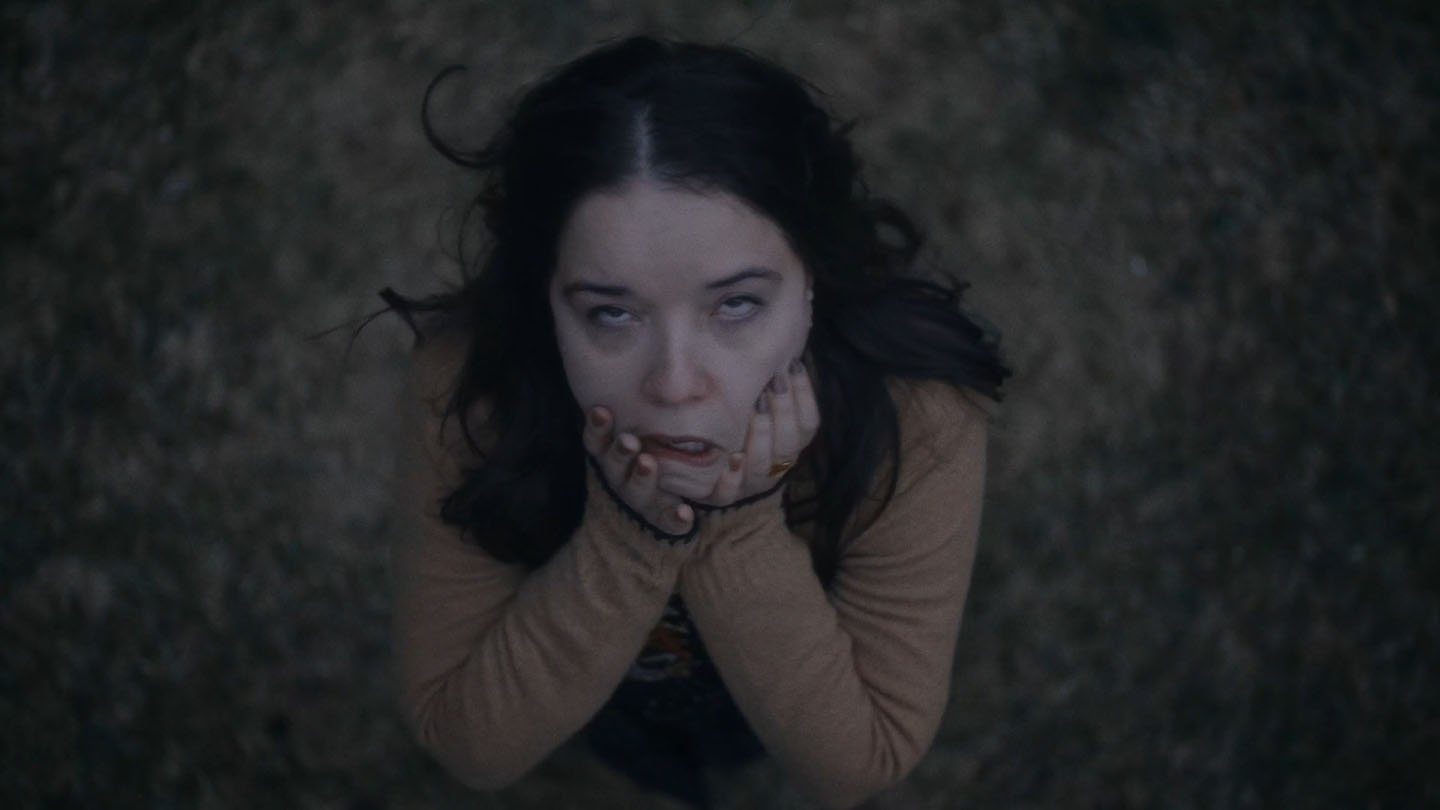Sashia Dumont and Paul Robinson’s The Resonance, a supernatural horror set in and styled like the 1970s, features a silent protagonist and the loud ministrations of the malicious spirit governing the events of the plot. Tasked with reviewing the files of a case that ended with the deaths of her colleague as well as his patient, psychiatrist Sloane Campbell discovers how things can go beyond the limits of both medicine and religion.
In a film limited so emphatically to one room it has to rely heavily on its actor. That faith (in herself—Dumont, also the screenwriter, plays the role) is well-founded. Reactions, silent and actively repressed as part of the characterisation, are nevertheless animated with the kind of full bodied participation that holds your attention from the first (even before Dr Campbell’s expectations and defences are thrown haywire). The longer it runs, the more Dumont’s face becomes fundamental to the horror.
In fact, despite the familiar premise (think The Ring and The Conjuring franchise), the film is absorbing all around, especially as it shifts gears from the first few minutes that could have very well come out of an aesthetic work with me vlog on YouTube had the platform existed in 1979. With an affecting rupture, the film shatters that sense of passive peace—not exactly a jump scare, but it is startling nonetheless to find death, and of a faceless character no less, impactful in a time of being saturated with images of cruelty. The trick, perhaps, is that it is not an image at all, but sound: the cassette recording of Landry’s final moments. Split apart in the film medium, the absence of one makes the other a potent device to destabilise you, as the film proves with chilling effect minutes later. The score is thunderous. In general, the film takes a sort of jump-scare-but-elegant approach to its technical method, and it pays off beautifully, as much in the sound as in the editing.
The climax brings the plot outside, untethering it completely. In the diffuse, sunless lighting of early dawn in the woods, malevolence looks especially powerful—especially with the framing and direction to rival the craft of a comfortably budgeted feature.
The Resonance is one of those rare shorts that takes a conventional form and rather than leach from it, adds to its aura. Your mileage may vary on how much it will make you keep the lights on in every room, but its finesse is not to be ignored.
The Resonance: On Falling Prey, and Our Final Moments As We Do
-
Direction
-
Cinematography
-
Screenplay
-
Editing
-
Music
